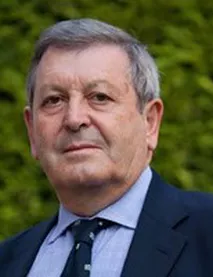
Prof. David Osselton
International Specialist Forensic Science
Prof Osselton lectures internationally as a plenary and guest speaker at scientific conferences on drug and poison analysis. Television appearances as a poisons expert include the National Geographic documentary series “More Bloody Tales” exploring the truth behind some of history’s most famous tyrants and the BBC TV series “Murder, Mystery and my Family”. As a speaker at public entertainment / after dinner events Prof Osselton offers a range of informative illustrated talks ( power point presentations) on forensic science under the series title of “Poison is my Business”. Titles include case histories of notorious poisoners including Dr Crippen, Dr Palmer, Dr Lamson and Lady Poisoners including Christina Edmonds the poisoned chocolates serial poisoners, Mary Cotton, Madelaine Smith as well as more general talks on The use of Poison Throughout History, Psychedelic and Hallucinogenic Plants, Poisonous and Medicinal Plants and Poisonous Animals. Prof. Osselton joined the UK Forensic Science Service in 1974 and became Head of Drugs, Alcohol and Toxicology Research at the Home Office Central Research Establishment in Aldermaston in 1984. In 1991 he was appointed Head of Toxicology for the Forensic Science Service. As a forensic toxicologist he over 40 years of experience and has been involved with many hundreds of forensic cases involving drugs and poisons including a number of high profile cases including that of Dr Harold Shipman. In January 2007 he joined the staff of Bournemouth University to develop forensic science teaching and research and he was Head of Department of Archaeology, Anthropology and Forensic Science. On retiring from Bournemouth University in 2017 he was conferred with the honour of Professor Emeritus in Forensic Science by Bournemouth University. Prof Osselton was a member of the Department of Transport Expert Committee on DUID that published its report in 2013 resulting in recent changes to the Road Traffic Act and subsequently a member of further Advisory committees in relation to driving under the influence of drugs. He is author / co-author of over 100 published papers / book chapters in toxicology and is a co-editor of Clarke’s Analysis of Drugs and Poisons, the internationally recognised reference work on poison analysis.
Cruise Talks
Series Title: Poison is my business
A series of power point illustrated talks related to forensic science and poisons.
Poisons, their use through the ages.
This presentation introduces poisons and how they were used by various civilisation through to the 20th century. The presentation explores how poison has been used to dispose of political adversaries and also in early forms of chemical warfare.
“A” is for arsenic.
During the reign of Queen Victoria arsenic had a wide variety of uses as a medicine and rodenticide..The wide availability and extent of arsenic use in the Victorian era lead to the Victorian period being known as “The Age of Arsenic”.The ready availability of arsenic, the introduction of life insurance policies and the fact that thesymptoms of arsenicpoisoning resembled those of food poisoning lead to arsenic being widely used as a murder weapon.This presentation will explore the use of arsenic in a selection of notorious murder cases.
“S” is for Strychnine
Strychnine, like arsenic was readily available for purchase from a chemist’s shop during the Victorian era both as a tonic and also for poisoning larger vermin.Strychnine was the poison of choice by the serial poisoner Christina Edwards and also by Dr Palmer, the Rugeley Poisoner. This presentation will explore the properties and nefarious use of strychnine illustrated by the “Case of the Poisoned Chocolates” and the murder of Mr Parsons Cooke by the infamous poisoner Dr Pritchard.
Lady Poisoners
Poisoning is often attributed to females as the preferred means of murder although a wider look at the gallery ofnotorious poisoners would indicate that women do not necessarily feature more frequently than men.Nevertheless there have been several cases involving women poisoners and in this presentation we shall explore the stories behind some of these cases.
Medical Professionals in the Doc and the emergence of modern forensic toxicology
There is often a professional link associated with the use and availability of poison and those working in fields allied to medicine have ready access to poisons that are not so widely available to the general public.Some poisoners commit their felony to break the “eternal triangle”, some in order to resolve financial debt and some we simply do not know the reason why.In this presentation we shall explore the intriguing cases of Doctor Crippen, Dr Smethurst, Kenneth Barlow and Dr Shipman to illustrate how advances in forensic science played a part in the detection of these poisoners .
Poisons in the book shop
The crime section of many bookshops is arguably the most popular section and many authors have used poison as the murder weapon in their storylines. Dame Agatha Christie wrote 62 novels in which poison was involved, Sir Arthur Conan Doyle used poison 10 times and even Shakespeare mentioned poison in three of his plays.This presentation takes a look at some of the poisons used in literary works.
Poisonous creatures
Numerous animals use poison as a means of protecting themselves or for obtaining food.This presentation will explore a variety of poisonous creatures including molluscs, fish, snakes, frogs and birds and describe the adverse effects of these toxins on humans.
Hallucinogenic Plants
Hallucinogenic and psychoactive substances have been used for thousands of years in religious ceremonies, witchcraft and by individuals wishing to experience pleasurableor altered states of mind. Many hundreds of plants contain chemicals that can produce hallucinogenic experiences for those who take them and many of these substances have been used as a basis for the development of therapeutic drugs used in medicine.This presentation will explore some of the plants and fungi that have been used by man in a bid to achieve hallucinogenic or psychoactive states.
The drug problem today
Drug misuse is an international problem that is constantly changing and challenging law enforcement agencies around the globe.This presentation will outline the challenges posed by the increasing use of New Psychoactive Substances (NPS) and the devastating effects their use is having on users and society.
Recent Cruises
Sea Princess C913 9 July 2019 Transatlantic
Majestic Princess 89444 26 Aug 2019 Shanghai to Sydney








